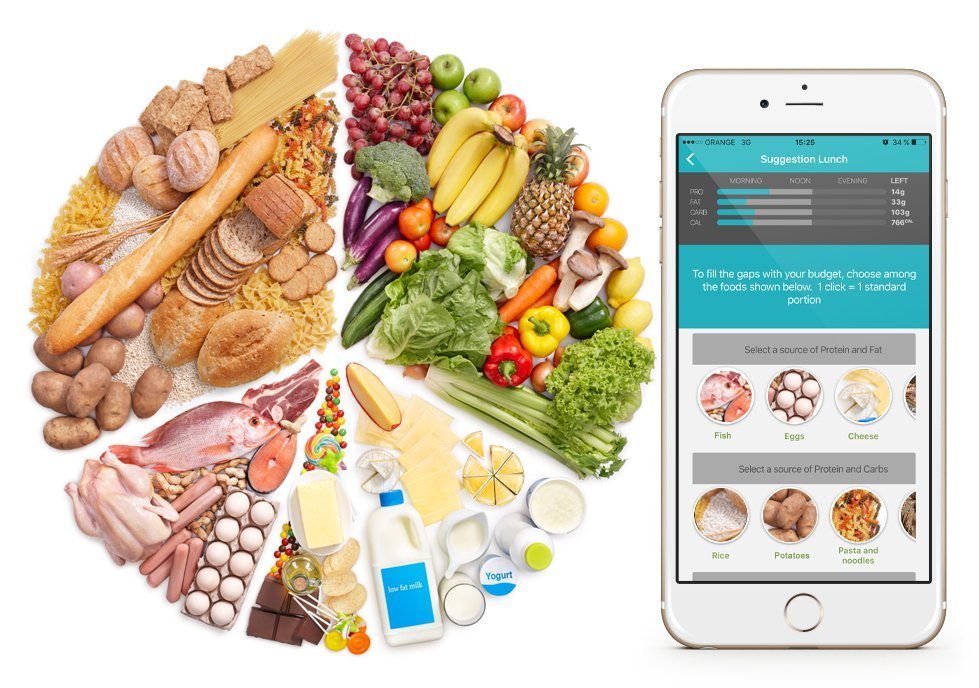In this illustrative scenario, we explore how the DietSensor App can provide support to manage chronic conditions.
First of all, the bad news…
As food has become more processed, commoditized and ubiquitous, we have seen significant changes in how what we eat and drink negatively impacts health, resulting in an exponential increase in diet-related conditions and the need for close nutritional control to manage chronic diseases. There has been a transition in nutritional foods, which has seen plant based diets being replaced by diets that are richer in added sugars and animal fats. The amount of food consumption has been increasing, and globalization combined with increasing population and rising incomes have increased demand for processed food, resulting in excessive consumption of saturated fat and sugar, and lack of nutritive elements as fibers, minerals and vitamins.
We know that improvements in diet and physical activity can help reduce the risk of chronic diseases. A ‘whole food’ diet rich in fruits and vegetables, ideally organic, is highly recommended. However, only a small part of the population has enough fruits and vegetables in their diets. A 2015 report by the Center for Disease Control (CDC) shows that only 1 in 10 Americans eat enough fruit and vegetables. Furthermore, an article on Vox.com on August 31 2016 shows just how easy it is to become obese in America. It’s scary!
Now, the good news…
The good news is that we are seeing more and more people concerned about their health, their family’s health and the impact of mass produced food on the planet, adopting a whole food diet and rejecting processed foods. There is evidence to support the fact that a whole food, balanced diet can reduce the risk of developing obesity, diabetes, heart disease and certain cancers, and in some cases has reversed cancer or diabetes. Of course, everyone’s metabolism and genetic make-up are different, but it’s encouraging to see more and more of us are taking an active interest in nutrition and recognizing that tools that enable to see, measure and plan the nutritional value of the food we consume are a great help. After all, bad nutrition is the root cause of, and good nutrition the first medicine for, such diseases!
Josiah, a student who is studying links between diet and chronic diseases, recently came across DietSensor, which works as a standalone application or in conjunction with an associated handheld molecular sensor and digital scale, which allow the user to determine what is being eaten and keep track of portion amount. After giving the DietSensor App a try, Josiah is now a fan. This blending of science, technology and nutritional health management sounds like something out of science fiction, but it’s real, and available to everyone. The user friendly App is able to ‘read’ the nutritional value of food via the linked sensor that can scan homogenous food and drink and determine its nutritional value via its molecular make-up. A barcode scanner can also process nutritional data direct from packaging and pull information from an integrated database of some 600,000 food and drink items. Using the scale at home, Josiah can measure portion sizes and import that data automatically direct into the App via Bluetooth.
Making nutritional data easy to access is not the final goal of DietSensor. It is just the beginning, because information has the ability to empower the 1.4 billion overweight people in the world, and help them make better decisions related to their health. That’s what Josiah found interesting in DietSensor. It’s not just one more food-logging tool. It is a nutrition coach in your pocket. Each time Josiah enters a meal he can find suggestions in real time to balance this meal, given what he ate since this morning, and the target intake goal for this time of the day, based on each chronic condition. And what’s more, he gets education about healthy eating with an easy to read lesson that is displayed after each meal, tailored to his topics of interest (type 1 diabetes, type 2 diabetes, weight loss, and more).
What all of this boils down to is that we now have the easy to use tools available to support us in eating a balanced a healthy food and actively reducing the risk of chronic diseases, including obesity, diabetes, cardio vascular diseases, cancers, dental diseases and osteoporosis.

